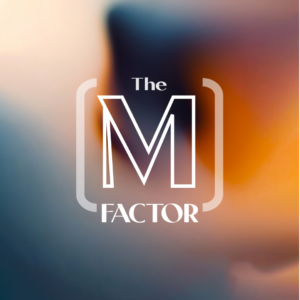Race and Gender in Menopause
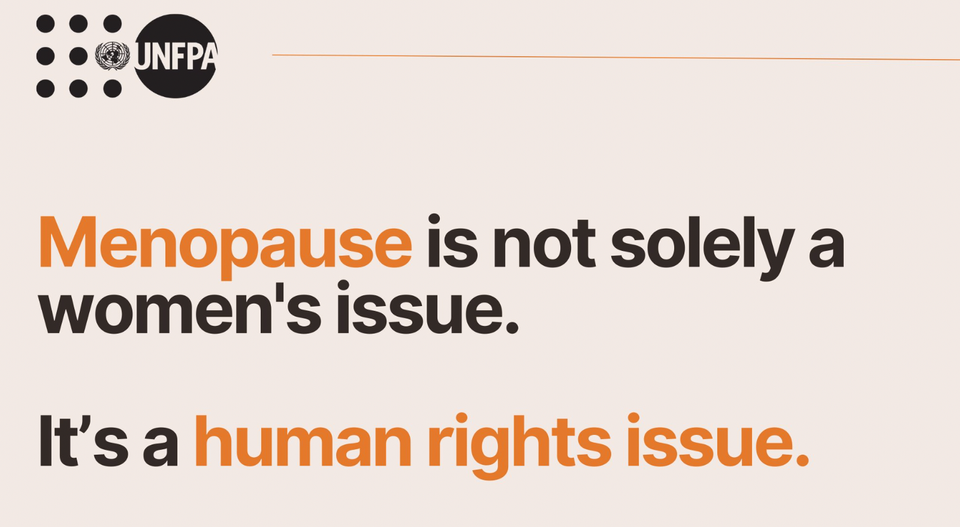
We know that each individual will experience their own distinctive menopause transition rooted in what might be called the causes and conditions of their unique history and context. It is also true that various groups of people tend to have experiences of menopause that have certain characteristics in common, for example:
· Earlier onset of perimenopausal symptoms and of menopause itself
· A longer perimenopausal transition
· Increased number, frequency, and severity of symptoms
· Greater difficulty accessing effective care and treatment for symptoms
As discussed in the two previous posts, the economic and social systems in our culture have developed within a milieu of racism, misogyny, and discrimination and are in large part fueled by the exploitation of certain groups of people, beings, and Earth itself. Groups who do not fit the attributes associated with the dominant group—White, cisgender male, heterosexual, wealthy, educated, having access to traditional routes of material and social power, and sympathetic to theocratic aims—tend to be actively excluded or routinely neglected by the systems that are meant to serve and support health and well-being. These systems include healthcare; education; social safety nets that address special health and life needs, both temporary and permanent; public health projects that ensure access to clean air, water, and soil; security such as emergency healthcare and fire forces, etc.
We know that the hormonal cycle of menstruation confers protective benefits on the human body. The rise and fall of estrogen, progesterone, and testosterone circulating through a woman’s body powers her brain; helps to build bone; calms the nervous system; supports arterial and venous elasticity; moderates the highs and lows of blood sugar; aids in the repair and suppleness of skin, ligamentous tissues, and hair; facilitates the building and maintenance of muscle, and more.
According to Cortés and Marginean (2022), “women of color tend to enter the MT [menopause transition] at earlier ages than non-Latina White women and may have a longer transition” (p.1). When women enter the menopause transition earlier, they may have to wrestle with symptoms longer and they are more likely to cross the threshold into postmenopause earlier. This gives them fewer years with access to the protective hormonal benefits of menopause.
The status of minority groups in this culture (some of whom will soon no longer be in the minority), tends to undermine the state of their health and well-being on a comprehensive level. These inequities only become exacerbated during menopause.

Weathering
In a 1992 paper published in the journal Ethnicity & Disease, public health researcher Arline Geronimus introduced the concept of “weathering.” At that time in the U.S., it was thought that the “excessive infant mortality rate” in the African-American community might be linked to the relatively high rate of adolescent childbearing in that group. As Geronimus points out, the logic behind this was based “on a common presumption that maternal age variables measure a universal developmental process—biologic or psychosocial” (p.208). In other words, it was assumed that women in their 20s would be at the ideal childbearing age physically and psychologically, while women on either side of that range would experience a higher rate of complications, including infant morbidity and mortality. In fact, statistical data from women in this presumptive “prime” childbearing period is often used as the reference group against which other age groups are compared.
However, what Geronimus discovered is that Black women in their teens actually had a lower infant mortality rate than those in their 20s. As she wrote, “This variation suggests that different ‘aging’ processes may be occurring among women from different populations who become mothers” (p.208).
The weathering hypothesis suggests that “maternal age variables…be seen as reflections, on a population level, of the ways in which socioeconomic inequality, racial discrimination, or race bias in exposures to environmental hazards may affect differentially the health of women who will become mothers, not only in absolute terms, but also interactively with each other and increasingly as women age” (p.210, bold mine).
So, there are a few things to pull out of this:
· Social determinants of health (SDOH, pictured in a graphic below), profoundly and—in an inequitable environment—preferentially impact each person’s health and well-being.
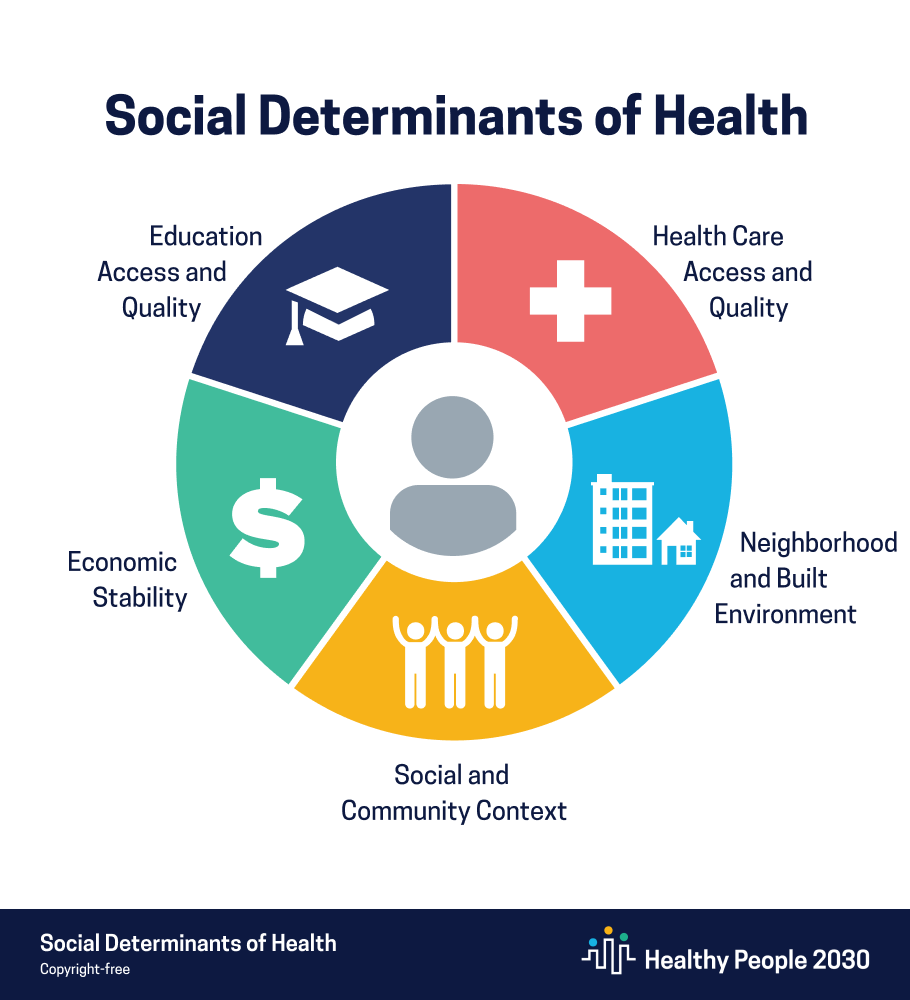
· These SDOH interact with each other over time in a compounding effect that serves to physiologically age people more quickly than they would otherwise age. This can be measured at the genetic level. According to multiple sources, including a post from the Yale School of Medicine, “weathering has been tied to telomere shortening” (Cortés & Marginean, 2022; Yup, 2022). Telomere length is associated with signs of chronological aging because telomeres protect chromosomal stability and tend to shorten with age, increasing the risk of disease and deterioration.
· Just as with the intersection of multiple identities described in the previous post, SDOH intersect in a way that is not merely additive but is multiplicative. In other words, poverty + racial discrimination + toxic exposure ≠ cancer. It’s less like an equation and more like a meteorological riddle: How will the winds from the four corners meet? At what velocity will they spin? Will they coalesce into a storm, and if so, which direction will they go?
· Chronic and/or repeated exposure to stress is called allostatic load and it creates physiological changes that have long-term consequences for a person’s health. These consequences can remain in a person’s genes and physiological functioning long after the stressors have been alleviated. So, for example, a girl that was raised in poverty, suffering malnutrition and hypervigilance due to reduced safety in her environment, is at greater risk of having difficulties with bearing healthy, full-term infants later in life (Geronimus, 1992).
· In a 2023 NPR interview on “Fresh Air,” Geronimus says, “the work you’ve done to survive the storm is also the storm itself.” Coping mechanisms such as smoking and poor nutrition can influence the age at which a woman goes into menopause, plunging her into the aging process earlier and increasing her risks of long-term health problems.
o Coping mechanisms learned within an inequitable milieu, such as eating processed foods, engaging in addictive behaviors, neglecting or avoiding healthcare visits, or relying on relative strangers for childcare, might be viewed from the outside as unhealthy individual choices a person is making. However, it’s important to understand that these “choices” might be the only options economically or geographically available and/or they serve a need for alleviating the perception of stress or how stress is experienced in that moment.
In the same NPR interview Geronimus shares why she chose the term “weathering” to describe the process of accelerated cellular aging due to chronic stress and the coping it requires. She says she wanted to describe not just the erosion and cost to one’s being, but also to the survival orientation of those who are subjected to weathering. “Weathering” is a term chose to connote “withstanding the storm as well as being beaten down by it” (Davies, 2023).
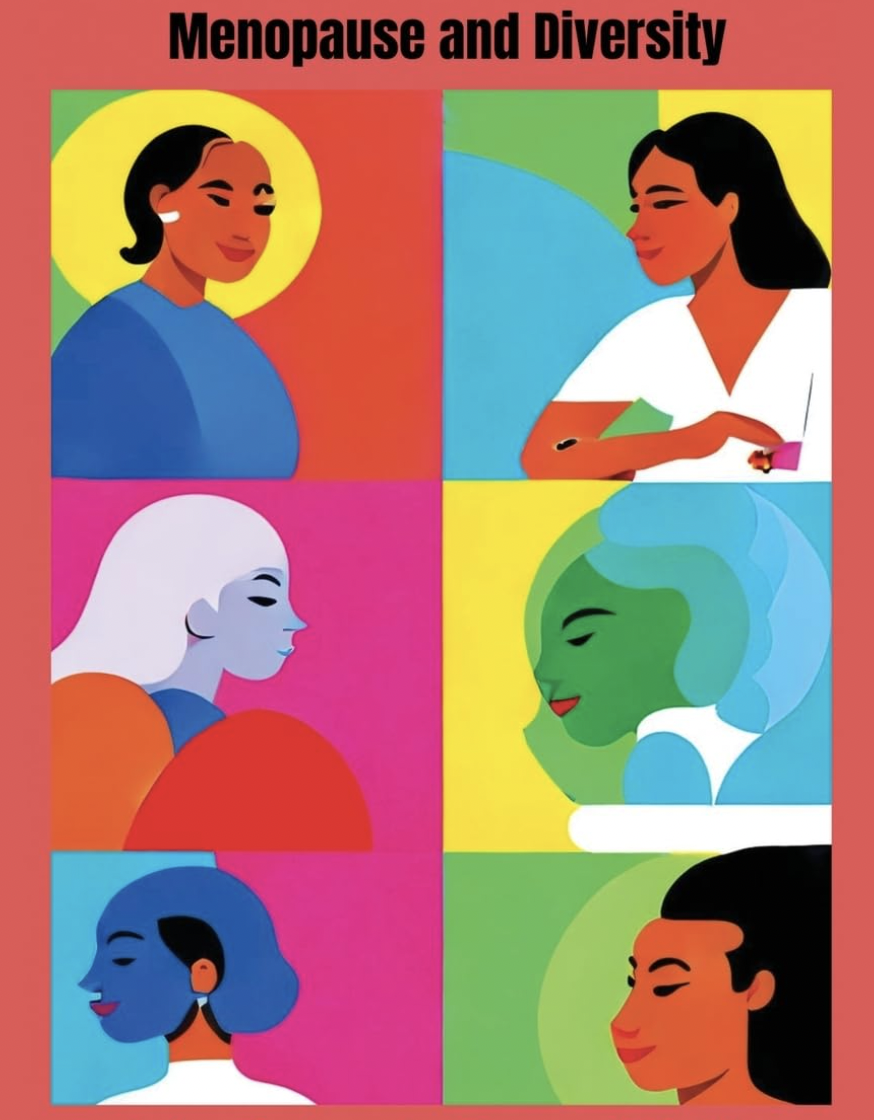
Race and Menopause
According to statistics from the Study of Women’s Health Across the Nation (SWAN), a longitudinal study launched in 1994, the average time span of menopause symptoms is different for different groups of American women:
· 4.8 years for Japanese-American women
· 6.5 years for White women
· 8.9 years for Latina women
· 10.1 years for Black women
(Quoted in “The M Factor,” a film premiered on PBS November 2024.)

Obviously, there are many groups missing from these statistics, Indigenous and mixed-race women as well as gender non-conforming women, to name a few. However, the statistics are so widely diverse that an investigation of underlying causes and conditions of women’s lives within this culture are clearly merited.
SDOH and the effects of weathering can account for much of this variation. What researchers have been discovering over the last several decades is that the American way of life is essentially unhealthy for most people. Just as the theory of weathering accounts for why some people become unhealthier as they age at a much quicker pace than is typical, it has been shown that immigrants to the United States suffer more stress-related damage the longer they’ve been in this country. In fact, the more upwardly mobile they are and the further they shift from their own cultural milieu into mainstream, traditionally “White” spheres of influence, the unhealthier they become (Davies, 2023).
Complexity
Interestingly, in the “Fresh Air” interview Geronimus says that in the research on weathering so far, the group that suffers the most stress-related damage in terms of weathering are poor Whites. None of this is simple cause-and-effect, it’s more chaos theory in accord with the meteorological metaphor I offered above.
In one study I read, Kochersberger et al. (2024) reported on the severity of menopausal symptoms of close to 69,000 women in the U.S. and how these symptoms were associated with race, ethnicity, and socioeconomic status (SES).
I found it interesting that each group of women had different symptoms of menopause that were more severe or prevalent:
· Black women reported more severe vasomotor symptoms such as hot flashes and night sweats, sleep issues, painful sex, and unusual periods.
· Asian women had more mood swings, an increase in acne or facial hair, and heart discomfort.
· Indigenous women had more sleep disturbances, skin/hair changes, and joint/muscular discomfort, and the most severe anxiety/depression.
· Middle Eastern and Indigenous women had the highest severity of brain fog.
· South Asian women had a lower prevalence of symptoms generally, but the highest severity for weight changes among all races/ethnicities
· All races/ethnicities, including mixed-race women and Latinas, reported greater severity in menopausal symptoms than White women.
Although “across all symptoms, higher affluence score[s] corresponded to lower symptoms severity,” researchers ultimately found that differences in SES alone could not account for disparities in the severity of symptoms between women of different race/ethnicities. This sound confusing, but what it means is that a woman’s economic status alone could not account for the severity of symptoms. When SES was statistically controlled for, women of non-White groups still had greater severity of symptoms.
This points to race itself being a significant enough factor in itself to account for health inequities regardless of a woman’s economic standing.
The variety in symptoms and symptom severity according to race/ethnicity reveal some of the complexity in attempting to address root causes of both ill health and systemic health inequities.
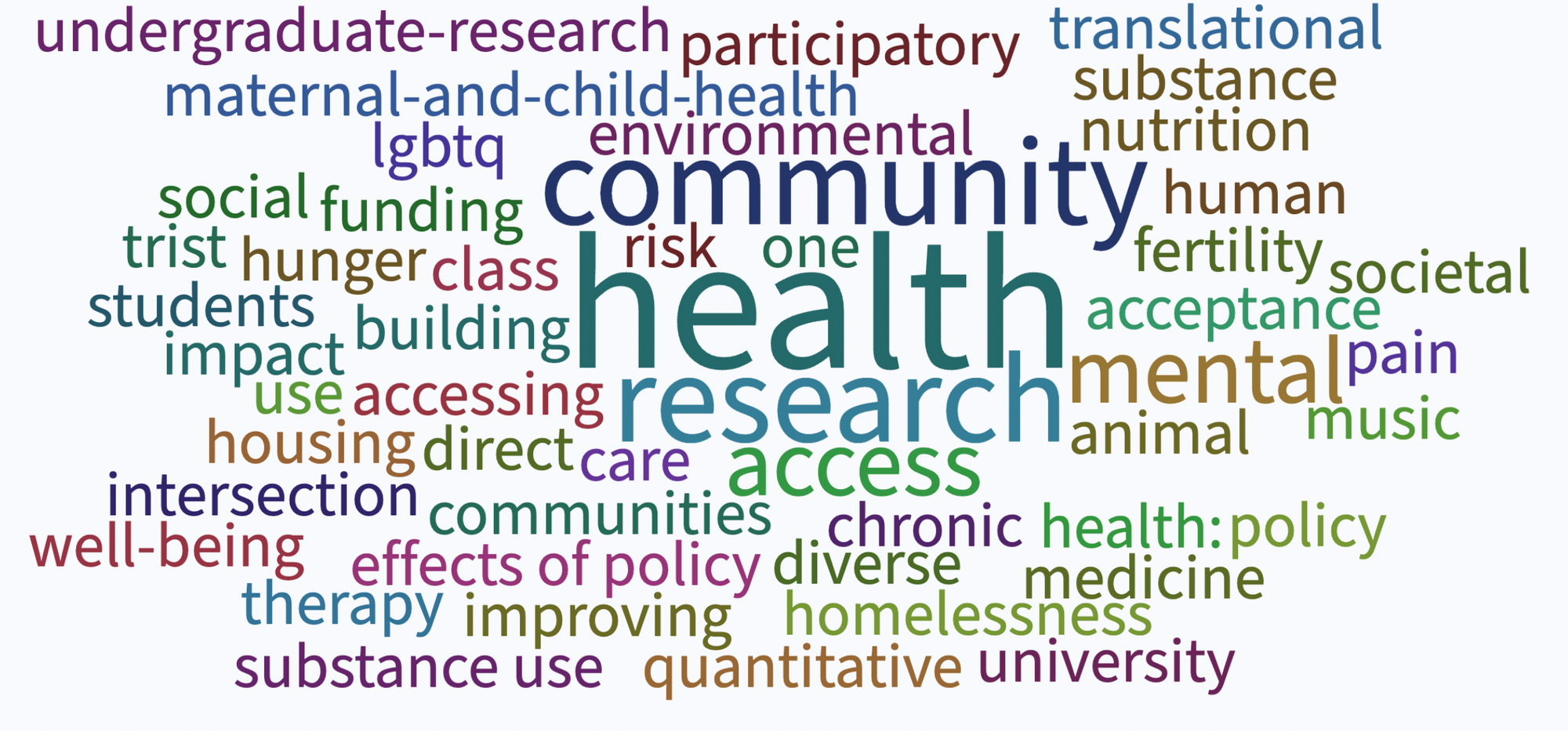
Areas of Inequity
There is a large and growing body of research in the field of health disparities and health equity. Multiple studies I consulted spoke to myriad contributing factors in the perpetuation of health inequities:
Geographic access to clinics, practitioners, pharmacies
Economic access to healthcare generally
Education level, which contributes to comfort seeking healthcare, knowing how to access it, and understanding what is being said to you by providers
Health Literacy:
This includes culturally relevant, linguistically congruent educational materials and medication/treatment instructions.
It also means making sure that instructions and educational information is written at a reading level that can be understood by someone at a 3rd-6th grade reading level.
Race and culture concordant healthcare practitioners: People of diverse races, languages, and genders are woefully underrepresented in the healthcare professions. Yet people tend to be more comfortable with providers with whom they feel some cultural affinity. Zahn et al. (2024) found that “Some…black women…felt more comfortable and respected in race-concordant care” (p.3).
Even if we do not currently have enough healthcare practitioners to attain racial/cultural congruence with the general population, it is possible for current and future practitioners to become more culturally competent, inclusive, and humble. We can incorporate cultural competency curricula into health education across the board so that even when practitioners are confronted with someone whose culture and community they are not familiar with, they understand their own limitations and know how to educate themselves to provide sensitive and effective care.
Women of other races are underrepresented in research: Just as all women have been excluded from medical research for generations, essentially because their hormonal complexity “messed up the results,” the same thing continues to women of non-White races.
Reeves et al. (2023) found that there was “systematic exclusion” of Black women from the SWAN study from the beginning due to selection bias, i.e., how participants in the study were chosen. They offer evidence that the effects of “weathering” led to the exclusion of thousands of participants and ultimately, “Failure to account for multiple forms of selection bias masked racial/ethnic disparities in the timing of menopause in SWAN” (abstract).
In their article on menopause hormone therapy (MHT) prescribing Conklin et al. (2024) wrote “physicians’ recommendations may be influenced by studies including mainly non-Hispanic (NH) White women and…physicians may be less likely to recommend MHT to Black women due to the lack of evidence for MHT use among minorities” (p.18).
As alluded to above in the research looking at menopause symptoms at the intersection of socioeconomic status and race/ethnicity, “limited research exists on the hierarchy and weight of attribution of…factors [contributing] to women’s experiences [of menopause symptoms and treatment utilization]” (Peate et al., 2024, p.2). In other words, we need to do more research on how to do the research that can tell us more about how women’s life circumstances are affecting their health.
Another issue that can arise in research is “addressing the discrepancy between what researchers choose to study and what patients and healthcare providers want to know” (Peate et al., 2024, p.4). In recent years translational research, which seeks to move evidence-based knowledge into practical application and test it there, has been in the ascendence, especially in public health.
Discrepancies in treatment regimens, including menopause hormone therapy prescribing. In their research looking at health disparities and hormone therapy prescribing, Conklin et al. (2024) found a variety of results, including:
· Black women “used medications other than hormones to treat menopause symptoms more often compared with NH White women.”
· “Non-White women had had less anti-osteoporosis medications prescription claims than NH White women.”
· “Asian women used non-prescription therapies more compared with all other ethnicities.”
· There were discrepancies in prescribing according to age, with some studies showing older women getting more MHT and others showing younger women getting more prescriptions.
What the authors did find is that “the most frequent disparity in MHT prescribing was found between ethnic groups” (p.17). Factors that had a significant impact on MHT prescribing and patient adherence:
· Income
· Geographic location
· Insurance coverage
· BMI, alcohol use, and smoking
· Practitioner bias
· Trust
Dismissal of symptoms
This is something that tends to happen of women of all races across time. Dismissal happens because of sexism, racism, and paternalism, but also because of time crunches for health providers, impatience with communication difficulties, lack of cultural awareness and sensitivity, and deficiencies in education about women and menopause generally and how race/ethnicity affects health specifically. Dismissal of symptoms profoundly impacts women’s trust/distrust of healthcare and its providers.
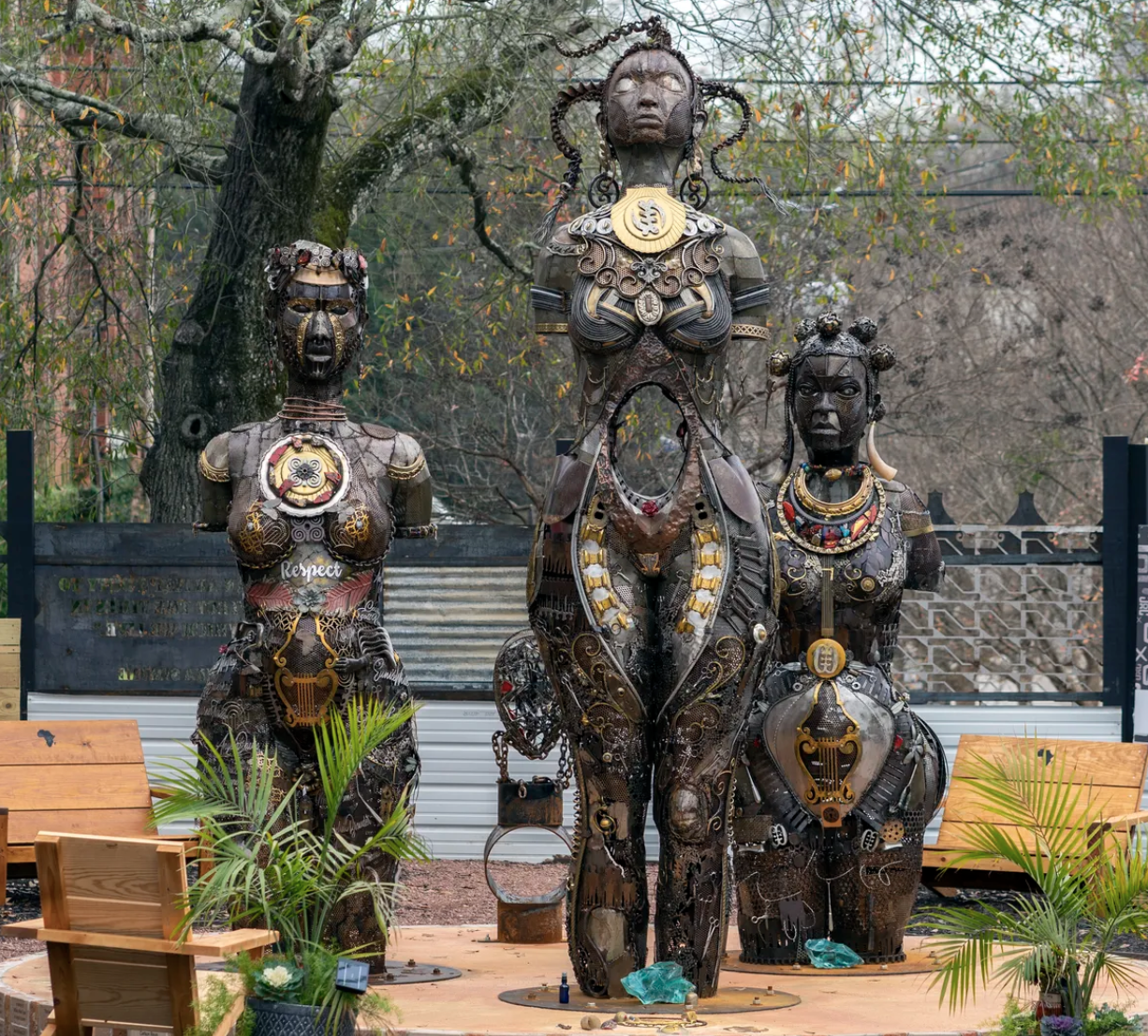
History
The issue of trust is one rooted not only in the lack of education and health literacy on the part of individuals or in language barriers, cultural insensitivity, patient-provider incongruency, and lack of inclusivity in health care generally. It is also based on a grim history of how people of different races have been exploited by the medical field.
I will not go into a lot of detail here, but will mention a few key instances of exploitation, some of which have been present into the 21st century.
The Tuskegee Syphilis Study:
Started in 1932, this study was instituted to follow a few hundred African-American men with the aim of observing and charting the normal course of syphilis. However, these men were not ever offered treatment for their disease, even after penicillin was readily available. The study was ended in 1972, after being exposed by the media.
Anarcha, Lucy, and Betsey:
These women were slaves who were repeatedly experimented on by the self-styled “father of gynecology,” James Marion Sims. He was approached by slavers who were interested in resolving the problem of vesicovaginal fistulas, a complication of childbirth that leads to chronic incontinence as well as vaginal scarring and dysfunction. These men could not get the work they wanted out of women who were suffering with post-childbearing complications and wanted Sims to come up with a solution. Over the course of five years Anarcha alone underwent 30 operations without the benefit of anesthesia. Betsey and Lucy also endured multiple surgeries. In the end, with the assistance of Anarcha, Betsey, and Lucy after his male assistants deserted him, Sims discovered a way to repair the fistulas. The three women were sent back to their owners and Sims went on to fame and fortune.
Sterilization
According to Ko (2016), “federally-funded sterilization programs took place in 32 states throughout the 20th century.” These were associated with various eugenics movements and were considered “a cost-effective way of relieving society of the burden of providing for the social welfare of the unfit and socially inadequate” (Bold, 2015).
The Supreme Court put its imprimatur on these strategies in Buck v. Bell (1927) when “the court held 8 to 1 that the state, under its police powers, had the constitutional authority to segregate and systematically sterilize people to reduce the economic and societal burden they inflicted on the nation” (Bold, 2015).
Although he considered America’s forays into eugenics “weak beginnings,” Adolf Hitler wrote admiringly of these attempts in Mein Kampf (Bold, 2015).
Referred to as “Mississippi appendectomies” because these procedures often happened without prior discussion, understanding, or consent while women were receiving appendectomies, California prisons were still authorized to do sterilizations up until 2010 (Ko, 2016).
And in a 2011 post in Ms. magazine, Lisa Wade writes that “Puerto Rican women in both Puerto Rico and the U.S. have ‘one of the highest documented rates of sterilization in the world.’ Two-thirds are sterilized before the age of 30, many of them choosing this route because of economic conditions that prevent them from choosing to have more children.
All of this is to say that while health literacy, economics, patient-provider connection, and research are all factors affecting women’s menopausal transitions, different people groups have different histories with medicine and research.
All of these factors tend to contribute to the following:
· Suspicion and lack of understanding about what providers are offering
· Unwillingness or inability to pick up prescriptions or take medicines as prescribed
· Wariness about participating in research
· Suffering side effects and not being willing or knowing how to follow up with providers
Resources that may be helpful for people of non-dominant race/ethnicity

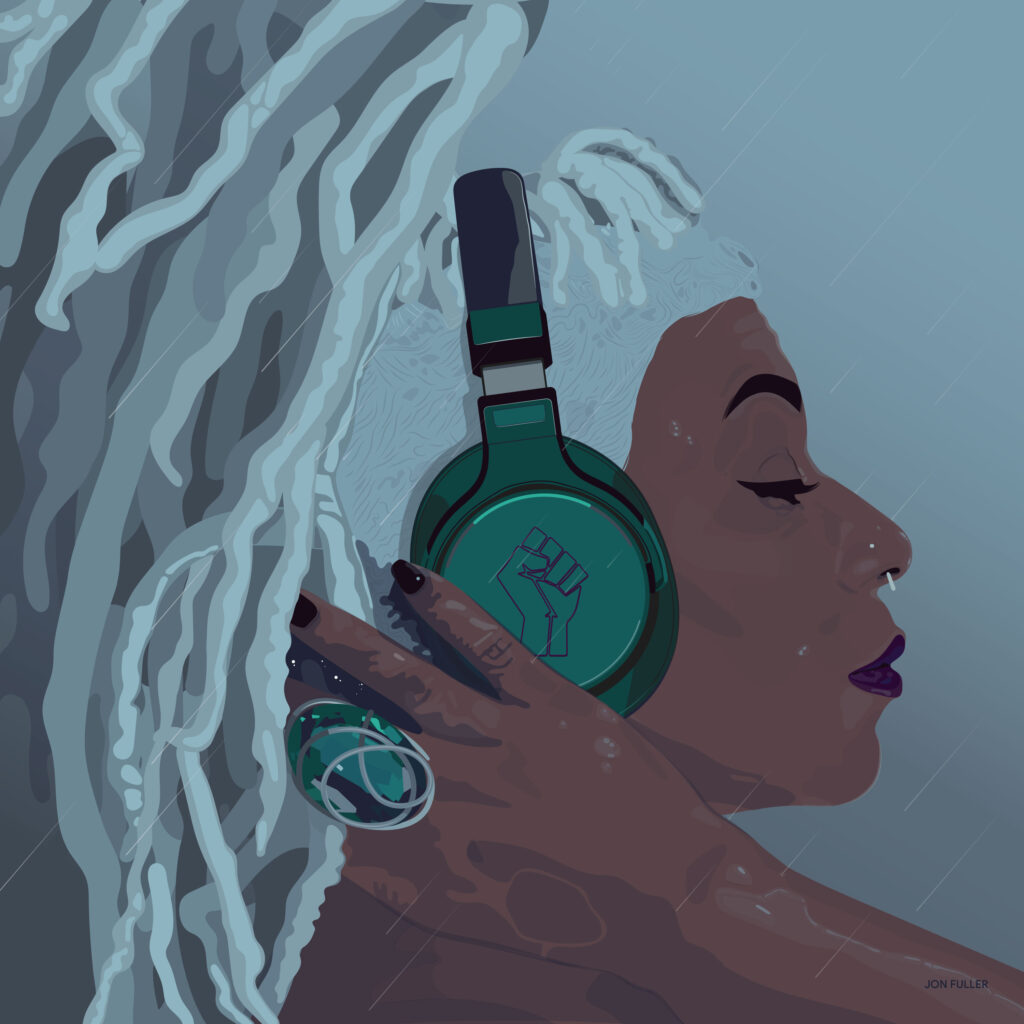
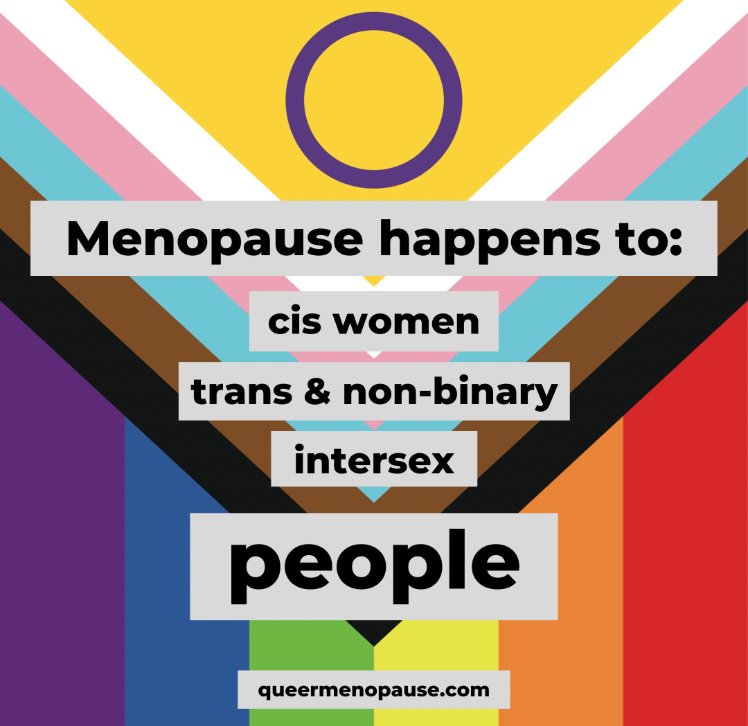
Gender Diversity and Menopause
There is not a lot of research available on how menopause affects gender non-binary and trans people. However, what is known is that menopause “affects anyone who has periods” (Queen Mary UofL). The menopause transition does happen to people who are not cisgender and the symptoms and risks they may experience are not well understood.
Trans women, those who were assigned male at birth (AMAB), are likely to undertake hormone therapy for life, but they may experience symptoms of menopause, such as hot flashes, body aches, depression/anxiety, etc., if that therapy is unstable or interrupted. They are also likely to experience some of the psychological/emotional impacts of how menopause and aging women are perceived socioculturally.
Trans men, those assigned female at birth (AFAB), will experience a menopause if they do not undertake hormone therapy and retain their ovaries. If they do have a full hysterectomy, they will go into a premature menopause, just as any woman would do. Experiencing menopause earlier is likely to put them at risk for things like lower bone density, but this risk may be offset by masculinizing hormone therapy that facilitates the development of muscle mass. This is not well understood at this point.
Non-binary and intersex people may experience menopause or not. It depends on anatomical factors and any medical/hormonal therapies they may be using.
This is a two-minute video from Menopause Alliance Australia narrated by Dr. Michelle Yong that describes how menopause may manifest in gender diverse individuals: https://menopausealliance.au/talk/trans-and-non-binary/
Barriers to care
Gender diverse individuals and groups in this culture experience the same barriers to healthcare and risks of poor health as those who have a different race/ethnicity from the dominant group.
They are subject to provider bias and lack of education, a paucity of research about their unique experiences, hesitancy to engage with the healthcare system because of systemic discrimination and past experience, and a history of violence in the culture against them that may make them reluctant to draw attention to themselves. As with any other person, they are subject to the social determinants of health, and because of systemic discrimination gender diverse individuals may find it more difficult to remain at home through adolescence, find housing, stay the course in higher education, find well-paying jobs, afford basic or complex medical care, etc. “Weathering” is a phenomenon that affects this group as much as any other person subject to the chronic stresses of living in a culture that insists on gender duality and the erasure of diverse experience.
More than a body
We know that the experience of menopause is more than a simple physiological transition. If menopause was simply the cessation of menstruation this blog would not exist. Menopause itself is a rather meteorological manifestation with myriad systems within and without the body interacting in new ways to produce effects that are physical, psychological, emotional, mental, relational, and spiritual.
Toze and Westwood (2024) note that “Biomedical definitions of menopause are…closely entangled with normative social expectations of gendered discourses” (p.2). These discourses tend to be “deficit focused…[and with] close interrelations between menopause and gendered ageism” (p.1-2).
Interestingly, the experiences of gender diverse individuals going through menopause can shed light on personal and social constructions of biological processes such as menopause. For example, in a qualitative study asking gender diverse individuals about their experience of menopause Toze and Westwood (2024) noted the following:
· Some people felt more settled in their chosen identity, but others found the transition sparking more questions about their identity and how much hormonal effects define identity.
· One person felt more female, but then also noted, “it has made me focus on my female body in a way that I am not totally comfortable with” (p.5)
· A man who identified as both “non-binary” and “trans man,” and who still had a female anatomy, found that menopause was “pushing [him] into an externally female gendered experience and category” (p.5).
· A non-binary person who had found no dissonance with experiencing periods and pregnancy/childbirth found menopause “much more conceptually difficult. I think in large part because the social narrative is so much about ‘menopausal women’ and also often denigratory or shame-laden” (p.6).
Social narratives and the struggle to find relevant healthcare support were key factors in how difficult the menopause transition was perceived to be.
· “It’s very hard for anyone who doesn’t identify as cis female to overcome barriers to treatment, and infuriating” (p.6).
· “GP’s…have very little knowledge of female menopause never mind anyone who doesn’t identify as female” (p.6).
· “…GP at time hadn’t made the link between changing hormones, and vaginal atrophy leaving me vulnerable to UTI” (p.6).
· “I saw a GP about menopause symptoms later at around usual age, I think I was not offered anything, and came away feeling like I was expected to just ‘ride it out’” (p.6).
That last sentiment in particular may be familiar to anyone going through menopause regardless of gender identity. However, these words describe the lived experiences of a particular group of people, a group that demonstrates in its intra-group diversity the reality of how much range exists within any particular category of being we construct socially.
Just as this diversity creates friction, it also holds out to all of us the possibility of a radical kind of freedom involving self-definition and identity as our bodies and minds evolve within the constraints of systems based on ideas that increasingly no longer serve us.
This is part of why it is essential that we hear more about their life experiences directly from people who are different from us. But the more critical and immediate need to know more is so that all people will be able to survive and thrive. We all deserve not only to get our needs met, but to be fully supported in making the greatest contribution each of us can to the community we are—no matter how divided we currently feel.
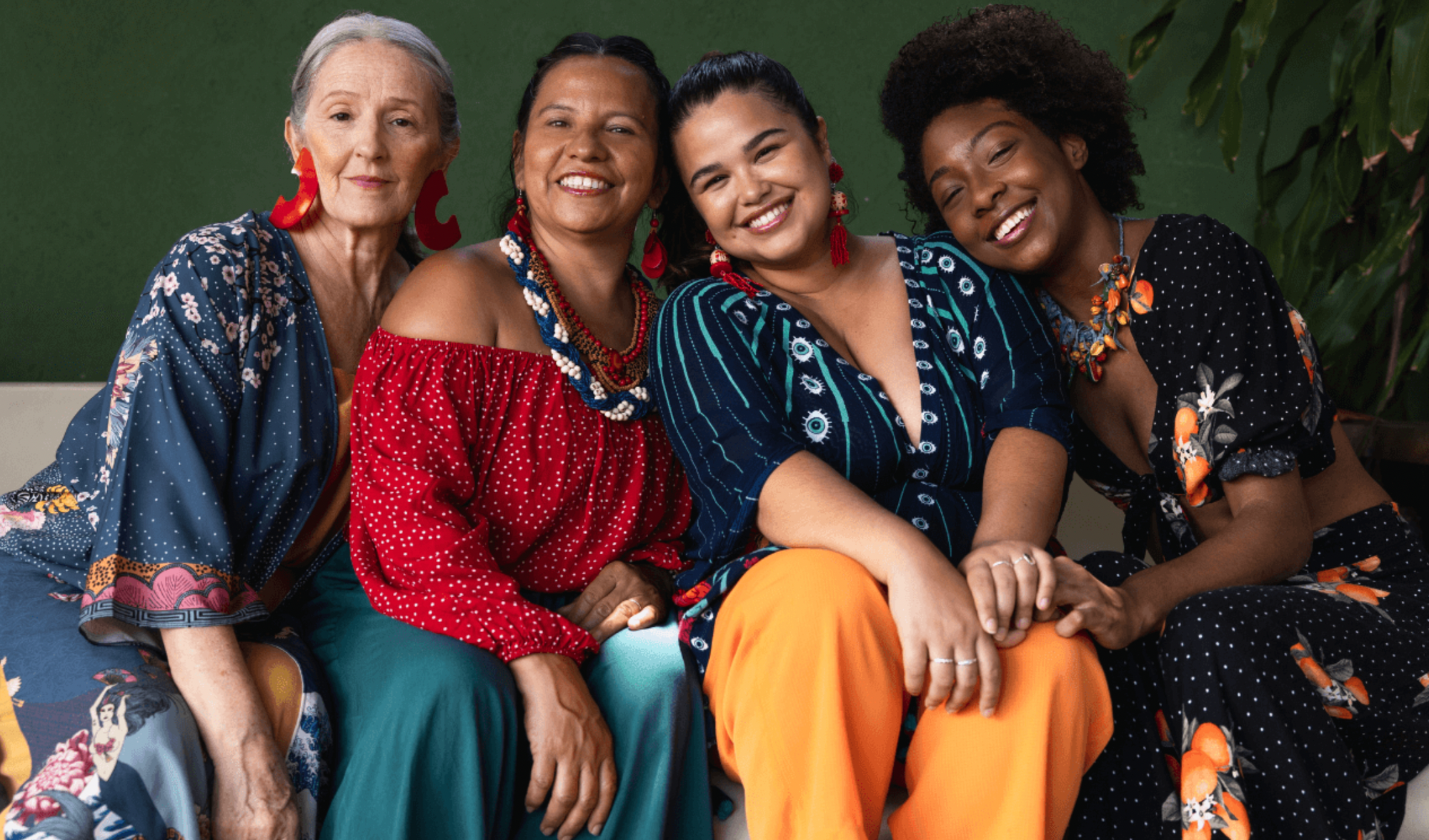
Menopause across cultures
People from different cultures across the world, as well as diverse people groups within the United States, view menopause, its symptoms, and its solutions from unique perspectives. A tiny bit of this has been alluded to above. Discrepancies in treatment regimens does not occur only because of bias and lack of research. There is some evidence that Asian-American women tend to use non-prescription treatments to alleviate symptoms because that route of care is more culturally familiar or congruent for them. And, as Conklin et al., (2024) noted, Black women tended to use non-hormonal medications as well as compounded hormone therapy more than non-Hispanic White women. The reasons for this are not known, but there may be cultural perceptions or preferences that lead to these choices.
In a future post I will explore how menopause is perceived and addressed across cultures and nations.
Resources
Bold, M.G. (2015, March 5). Op-Ed: It’s time for California to compensate its forced-sterilization victims. Los Angeles Times. https://www.latimes.com/opinion/op-ed/la-oe-0306-bold-forced-sterilization-compensation-20150306-story.html
Cheung, A. S., Nolan, B. J., & Zwickl, S. (2023). Transgender health and the impact of aging and menopause. Climacteric, 26(3), 256-262. https://doi.org/10.1080/13697137.2023.2176217
Conklin, D., Ramakrishnan, A., Yu, L., Varghese, S., Sajatovic, M., Loue, S., & MacPhedran, S. (2024). Health Disparities and Hormone Therapy Prescribing for Early, Peri-, and Postmenopausal Women: A Scoping Review. Journal of Racial and Ethnic Health Disparities, 1-22. https://doi.org/10.1007/s40615-024-02209-4
Cortés, Y.I., & Marginean, V. (2022, October). Key factors in menopause health disparities and inequities: Beyond race and ethnicity. Current Opinion in Endocrine and Metabolic Research, 26. https://doi.org/10.1016/j.coemr.2022.100389
Davies, D. (Host).(2023, March 28). How poverty and racism ‘weather’ the body, accelerating aging and disease [Audio interview]. NPR. https://www.npr.org/sections/health-shots/2023/03/28/1166404485/weathering-arline-geronimus-poverty-racism-stress-health
Geronimus, A. T. (1992). The weathering hypothesis and the health of African-American women and infants: evidence and speculations. Ethnicity & disease, 207-221. https://www.jstor.org/stable/45403051
Ko, L. (2016, January 29). Unwanted sterilization and eugenics programs in the United States. PBS: Independent Lens. https://www.pbs.org/independentlens/blog/unwanted-sterilization-and-eugenics-programs-in-the-united-states/
Kochersberger, A., Coakley, A., Millheiser, L., Morris, J. R., Manneh, C., Jackson, A., ... & Hariton, E. (2023). The association of race, ethnicity, and socioeconomic status on the severity of menopause symptoms: a study of 68,864 women. Menopause, 10-1097. DOI: 10.1097/GME.0000000000002349
Namazi, M., Sadeghi, R., & Behboodi Moghadam, Z. (2019). Social determinants of health in menopause: an integrative review. International journal of women's health, 637-647. https://doi.org/10.2147/IJWH.S228594
Peate, M., Johnson, T. L., Avis, N. E., & Hickey, M. (2024). Addressing sociodemographic, socioeconomic, and gendered disparities for equity in menopause care. Cell Reports Medicine, 5(6). https://doi.org/10.1016/j.xcrm.2024.101616
Printz, C. (2019). Black women less likely to adhere to hormone therapy for breast cancer. Cancer, 125(3), 331-331. https://doi.org/10.1002/cncr.31970
Queen Mary University of London. Who can experience menopause? https://www.qmul.ac.uk/human-resources/equality/menopause/who-can-experience-the-menopause/
Reeves, A., Elliott, M. R., Karvonen-Gutierrez, C. A., & Harlow, S. D. (2023). Systematic exclusion at study commencement masks earlier menopause for Black women in the Study of Women’s Health Across the Nation (SWAN). International Journal of Epidemiology, 52(5), 1612-1623. DOI: 10.1093/ije/dyad085
Toze, M., & Westwood, S. (2024). Experiences of menopause among non-binary and trans people. International Journal of Transgender Health, 1-12. https://doi.org/10.1080/26895269.2024.2389924
US Preventive Services Task Force (USPSTF). Screening for Osteoporosis to Prevent Fractures: US Preventive Services Task Force Recommendation Statement. JAMA. 2025;333(6):498–508. doi:10.1001/jama.2024.27154
Vedantam, S., Penman, M., Schmidt, J., Boyle, T., Cohen, R., & Connelly, C. (Hosts). (2017, February 7). Remembering Anarcha, Lucy, and Betsey: The mothers of modern gynecology. [Audio podcast]. NPR. https://www.npr.org/2017/02/07/513764158/remembering-anarcha-lucy-and-betsey-the-mothers-of-modern-gynecology
Wade, L. (2011, July 21). Sterilization of women of color: Does ‘unforced mean “freely chosen?” Ms. https://msmagazine.com/2011/07/21/sterilization-of-women-of-color-does-unforced-mean-freely-chosen/
Wikipedia. (2025, April 3). Tuskegee syphilis study. https://en.wikipedia.org/wiki/Tuskegee_Syphilis_Study
Yup, K. (2022, November 30). Black women excluded from critical studies due to ‘weathering.’ Yale School of Medicine. https://medicine.yale.edu/news-article/black-women-excluded-from-critical-studies-due-to-weathering/
Zahn, K., Pittman, A., Conklin, J., Knittel, A., & Neal-Perry, G. (2024). Disparities in menopausal care in the United States: A systematic review. Maturitas, 108021. https://doi.org/10.1016/j.maturitas.2024.108021
Image Resources
Healthy People 2030, SDOH: https://odphp.health.gov/healthypeople/priority-areas/social-determinants-health#:~:text=Determinants%20of%20Health-,Social%20Determinants%20of%20Health,Social%20and%20Community%20Context
Menopause and Diversity: https://www.amazon.com/Menopause-Diversity-Exploring-Impact-Ethnicity/dp/1738979601
Areas of inequity: https://research.usu.edu/rd/summits/health-disparities
Anarcha, Lucy, Betsey monument: https://www.smithsonianmag.com/smart-news/mothers-of-gynecology-monument-honors-enslaved-women-180980064/
Gender Diversity & Menopause: https://www.queermenopause.com/
Menopause across cultures: https://www.thewomensjournal.co.uk/womens-life/health-wellness/menopause-in-different-cultures-around-the-world/
